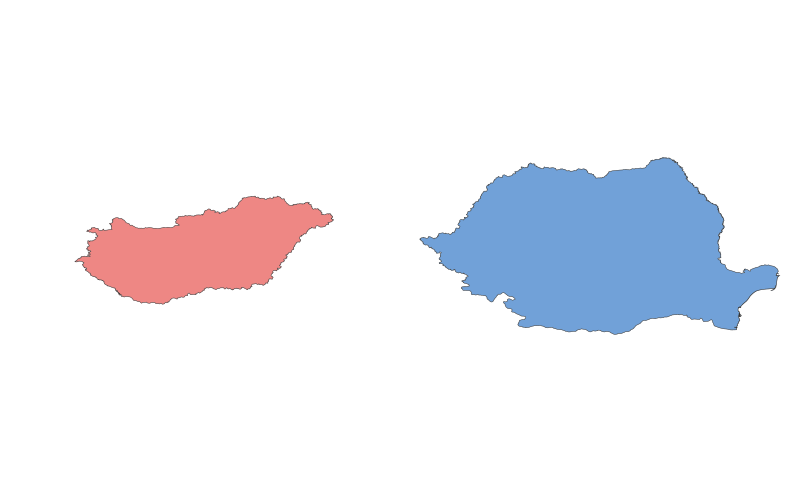Hungary vs. Romania: A Geographical Comparison

Comparison Table
| Category | Hungary | Romania |
|---|---|---|
| Location | Central Europe, landlocked | Southeastern Europe, borders Black Sea |
| Size | 93,030 km² | 238,397 km² |
| Climate | Temperate continental | Temperate continental (more varied) |
| Natural Resources | Bauxite, coal, fertile soil | Oil, natural gas, timber, minerals |
| Urban Development | Budapest (capital, major hub) | Bucharest (capital, economic center) |
| Transportation | Well-developed rail and road networks | Extensive rail, roads, and ports |
Description
Hungary
Hungary is a landlocked country in Central Europe, known for its rich history and cultural heritage. Once part of the Austro-Hungarian Empire, Hungary has a distinct identity with influences from both Western and Eastern Europe. The capital, Budapest, is famed for its thermal baths, historic architecture, and vibrant arts scene. Hungary's economy is driven by manufacturing, agriculture, and tourism. The country is also home to Lake Balaton, the largest freshwater lake in Central Europe.
Romania
Romania, located in Southeastern Europe, boasts diverse landscapes ranging from the Carpathian Mountains to the Danube Delta. It has a complex history, with roots in Dacian, Roman, and Ottoman influences. Bucharest, the capital, is a bustling metropolis with a mix of historic and modern architecture. Romania's economy relies on industries like IT, automotive, and energy, with significant oil and gas reserves. The country is also known for its folklore, including the legend of Dracula, and its UNESCO-listed painted monasteries.
Both countries offer unique geographical and cultural experiences, making them fascinating subjects for comparison.